|
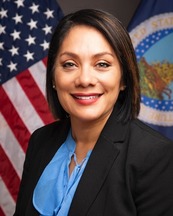
Throughout history, women have significantly shaped and advanced the agricultural industry, even in the face of numerous challenges and barriers. As we celebrate Women’s History Month, I want to recognize and appreciate the historic role of women in agriculture.
In the early days of USDA, women played a crucial role in developing and implementing agricultural policies, conducting research, and providing support to farmers and rural communities. One notable pioneer is Dr. Carrie Everson, who became the first woman to join USDA’s Bureau of Plant Industry in 1905. Her groundbreaking work in plant pathology paved the way for further advancements in agricultural science. Similarly, Dr. Temple Grandin, a renowned animal behaviorist, revolutionized the livestock industry with her innovative designs for humane animal handling facilities.
Women have also excelled in leadership positions within USDA. From Gloria Brown, the first Black woman forest supervisor, to Ann M. Veneman, the first female Secretary of Agriculture, these trailblazers have shattered glass ceilings and inspired future generations of women in the agricultural field.
Today, women continue to shape the future of agriculture at USDA. They are leading efforts to promote sustainable farming practices, improve food safety, and enhance rural development. Their contributions are instrumental in ensuring a resilient and thriving agricultural sector.
Let us honor the women who have dedicated their lives to agriculture and recognize their invaluable contributions. Together, we can continue to support and empower women in agriculture, creating a more inclusive and prosperous future for all.
|
|
|

USDA 1890 National Scholar Alumna Connects USDA Career with Service
Dr. Kristal Southern is a scientific liaison with the USDA Food Safety and Inspection Service and the designated federal officer for one of its advisory groups, the National Advisory Committee on Microbiological Criteria for Foods. In this role she supports public health issues related to the safety of the U.S. food supply. But she started her journey as a USDA 1890 National Scholar. “The USDA 1890 Scholars Program directed my future career,” she said. “It is one of the best things that ever happened to me.”
|
|
|

Kika De La Garza Fellow is a Farmer of Students
Baleshka Brenes is the director of agriculture programs at the University of Arizona Yuma (UAZ), where the student population is approximately 70% Hispanic and first generation. She is also a USDA E. Kika De La Garza Fellow. “My most rewarding experience as a fellow was learning about USDA opportunities from all the different USDA agencies,” she said. “Being an EKDLG Fellow increased my appreciation of how HSIs and USDA partner to solve the biggest agriculture challenges and prepare the next generation of agriculturists.”
|
|
|
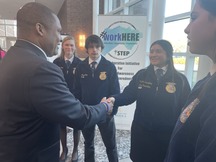
Local FFA Leaders attend North Carolina Rural Partners Network Event
During National FFA week, USDA Secretary Tom Vilsack and White House Domestic Policy Advisor Neera Tanden announced several USDA funding projects to bring high-speed internet, clean water, state-of-the-art infrastructure, and economic growth to rural communities at a Rural Partners Network event in Edgecombe, North Carolina. Ten representatives from the South Lenoir FFA Chapter professionally represented the next generation of rural leaders, met with local leaders, and heard first-hand Secretary Vilsack’s message of investing in rural areas to enable more young people to build good lives in their communities.
Faces of Agriculture Speaker Series Highlights USDA Career Paths
Faces of Agriculture is a virtual monthly speaker series hosted by the Office of Partnerships and Public Engagement (OPPE) to introduce students to the many career paths available at USDA. Last month, USDA Liaisons Travis Johnson and Horace Hodge described their current and past roles with USDA and offered valuable advice. You can listen to this recording and others at USDA Faces of Agriculture.
Don’t miss the March Faces of Agriculture webinar on Wednesday, March 27th when two Forest Service Employees will describe the unique career paths that led them to their current roles.
|
|
|
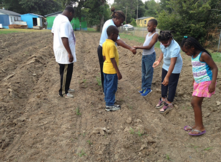
USDA 2501 Grantee Connects Rural Community Leaders in Service
The Rural Development Leadership Network works to keep people on their traditional lands, and to keep the land grounded in agriculture. The organization has received several USDA 2501 grants to support community-based development in poor rural areas through hands-on projects, education and skills building and networking. The organization also supports a two-year leadership program that combines field project work with online classroom study.
|
|
|
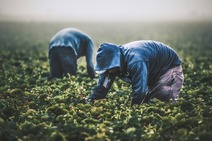
Help Guide Farmworker Safety Efforts
To help reduce the risk of pesticide injury and illness to farmworkers, the U.S. Environmental Protection Agency (EPA) is developing a new National Farmworker Training and Education Program. This initiative will support activities such as pesticide safety training, materials development, and outreach to farmworkers. Farmworkers and those who work with them are invited to provide input by March 25, 2024. Individuals and organizations with experience conducting farmworker education and training are encouraged to comment.
|
|
|

1890 National Liaison Program Manager
Allison Johnson
Allison Johnson has served as an 1890 National Liaison Program Manager since 2019. In this role, she oversees USDA liaisons at nine Land-Grant Colleges and Universities who connect underserved and disadvantaged students, farmers and ranchers with USDA programs and services.
Allison began her federal career as a soil conservationist with the Soil Conservation Service at the Natural Resources Conservation Service (NRCS) in 1993. She served NRCS for several years as a multi-county conservationist in Iowa establishing wetland easements, developing conservation plans, conducting GIS mapping, making wetland and highly erodible land determinations, and designing conservation practices for farm landscapes. Allison transferred to Texas in 1999, then to Shreveport, LA in 2002 as the first African American female district conservationist in Caddo Parish, where she established the first wetland easement on a minority farm in Caddo Parish.
Returning to Northeast Texas before joining the Office of Partnerships and Public Engagement, Allison served as the Resource Conservation and Development Coordinator for 26 counties (two regions) in northeast Texas.
Allison earned her B.S. degree in plant and soil science from Southern University and is from a long line of Southern University Jaguars, farmers, USDA-ers, educators and community leaders. She is one of six children and officially became a farmer in 2023.
|
|
|
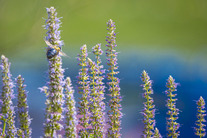
Discover What NAREEE’s New Pollinator Subcommittee is Doing
The Pollinator Subcommittee is the newest subcommittee of the National Agricultural Research, Extension Education, and Economics (NAREEE) Advisory Board. The board is led by staff in the Office of the Chief Scientist (OCS) in the Research, Education, and Economics (REE) Mission Area.
The members of this advisory subcommittee will be asked to make pollinator health-related recommendations, reviews, and consultations to the NAREEE Advisory Board (and subsequently to REE, other USDA mission areas, and federal pollinator coordinators) about national priorities, research needs, and the best available science informing USDA pollinator-related policy and program decisions.
Find out more by reading the NAREEE Advisory Board Pollinator Subcommittee Fact Sheet.
|
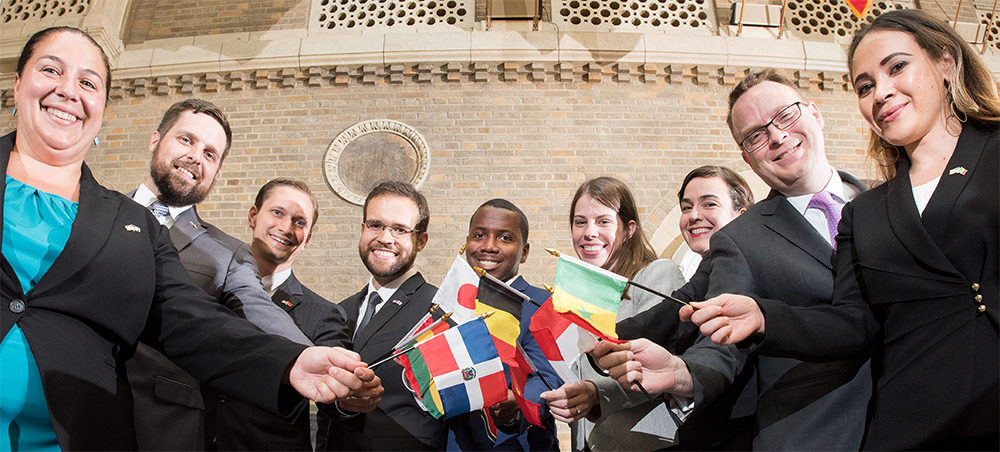
Foreign Agricultural Service Seeks Foreign Service Officers
Do you want to dedicate your career to supporting U.S. farmers and ranchers? To live in interesting places, learn new languages, and work with great people? If so, then the Foreign Agricultural Service (FAS) is for you! Later this year, FAS will conduct an assessment to hire new Foreign Service Officers (FSOs) to represent USDA at U.S. embassies and consulates overseas. FSOs:
- Analyze global agricultural production and trade
- Advocate for science-based trade regulations
- Market U.S. agricultural products
- Promote global food security, and technical expertise
- Fight climate change through capacity building projects
Visit the FAS careers page for more info and stay tuned for upcoming public information sessions and the application announcement in spring 2024. We hope to have you join us in representing the U.S. and USDA in markets and fields around the world. Please contact FASForeignService@usda.gov with questions.
|
|
|
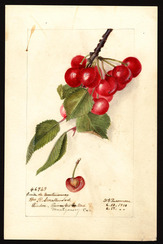
Biological illustration is an important tool used to identify and classify plant and animal species. Unlike photography, illustration can emphasize physical characteristics important to the biologist, as well as provide dimensionality and interest. USDA has employed illustrators throughout its long history, and women have numbered among their most prolific.
Mary Daisy Arnold (c.1873-1955) worked over 35 years with the USDA Division of Pomology illustrating fruit specimens. Mary Foley Benson (1905-1992) served as chief scientific illustrator for the USDA Bureau of Entomology between 1922-1928. And currently, Taina Litwak works as a scientific illustrator for the Agricultural Research Service’s Systemic Entomology Laboratory with an office at the Smithsonian Institution’s National Museum of Natural History. Here, she oversees the USDA/Smithsonian Entomological Scientific Illustration Archives. The demand for biological illustration has diminished over time, but the contributions of these women survive in meticulous – and beautiful – detail.
|
|
|
|
|
|